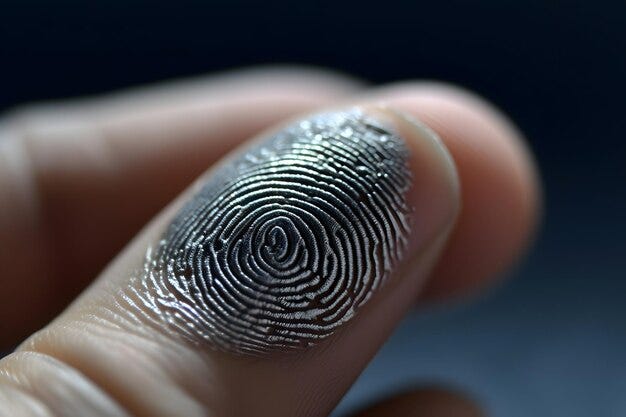Unveiling the Intricacies of Fingerprints: 12 Fascinating Insights
Written on
Chapter 1: Understanding Fingerprints
Fingerprints are the intricate designs of ridges and valleys found on the tips of our fingers. They serve as one of the most identifiable traits of our identity and are commonly utilized for identification, verification, and forensic purposes. Yet, how much do we truly understand about fingerprints? Below are twelve remarkable insights about these unique identifiers, including their origin and purpose.
1. Formation Begins Before Birth
Fingerprints are not a mere product of chance; they are shaped by both our genetic makeup and the environment. These patterns start forming in the womb around the 10th week of gestation, coinciding with the development of skin on the fingers. Influences such as pressure, temperature, and movement of amniotic fluid, along with the fetus's position, play vital roles in shaping the fingerprints. By the 24th week of pregnancy, the fingerprints are fully developed and remain unchanged throughout life, barring any injuries or diseases.

2. Fingerprints Are Not Exclusive to Humans
Humans are not the sole possessors of fingerprints. Many primates, including chimpanzees, gorillas, and orangutans, exhibit similar patterns. Other mammals, such as koalas, pandas, and raccoons, have their own distinct fingerprints. The evolution of these patterns appears to be a response to various environmental adaptations.
3. Each Finger Has Its Own Unique Print
It may be a common misconception that all fingerprints on one hand are identical. In reality, every finger has its unique fingerprint, and even the left and right hands differ. This asymmetry is attributed to the complex interaction of genetics and environmental factors during finger development.
4. Beyond Fingerprints: Other Types of Prints
While fingerprints are the most recognized type, they are not the only ones. Palm prints, footprints, ear prints, lip prints, and even tongue prints are also unique identifiers, although they are less frequently analyzed due to the challenges in collecting and preserving them.
5. Fingerprints Are Not Always Reliable
Despite their common use as evidence, fingerprints can be misleading. Various factors, including skin condition, surface texture, collection methods, and human error, can affect their accuracy. Instances of false positives and negatives exist, though they are relatively rare.
6. The Dynamic Nature of Fingerprints
Fingerprints change over time due to aging, injury, or environmental impacts. As we age, the skin loses elasticity, which can alter the appearance of fingerprints. Injuries may leave scars or distort the patterns, while environmental factors can also have an effect.
7. Other Biometric Identifiers Exist
While widely used, fingerprints are just one form of biometric identification. Other methods include facial recognition, iris scanning, voice recognition, and DNA analysis, each with its own strengths and weaknesses depending on the context of use.
8. Distinction Between Fingerprints and Finger Marks
Fingerprints refer to the actual patterns on the skin, while finger marks are the impressions left behind on surfaces. These can be visible, latent, or molded, with various techniques used to reveal them.
9. Fingerprints Follow Specific Patterns
Fingerprints are not random; they conform to specific patterns: loops, whorls, and arches. Loops are the most prevalent, while arches are the rarest, making up about 5% of all fingerprints.
10. Adaptability of Fingerprints
Fingerprints can adapt to stimuli, changing shape in response to pressure or temperature. This adaptability can enhance grip and regulate blood flow.
11. The Utility of Fingerprints
Fingerprints serve several purposes, including enhancing our sensory experience, protecting our fingers, providing a unique means of identification, and expressing individuality.
12. Fingerprints: A Marvel of Complexity
Fingerprints are not merely a curiosity; they embody a complex interaction of genetics and environmental factors. They reflect our identity, history, and connection as human beings.
The first video titled "Unlocking the Mystery of Fingerprints: What Makes Them Unique and How We Visualize Them" delves deeper into the science behind fingerprints, exploring their uniqueness and significance.
The second video, "Fingerprints' Hidden Secrets - Click - BBC News," reveals some lesser-known facts about fingerprints and their role in our identity.
Thank you for reading! If you have any comments or feedback, feel free to share them below. If you appreciate my work, consider buying me a coffee ☕
Join my newsletter to stay updated on my latest articles!